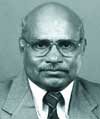
| Vol. 3 | No. 6 |
December 2001 |
Showing the way
The villagers of Baloda Lakha, 70 kilometers (km) north of Ujjain in Madhya Pradesh have solved their water problem. The community–based water management approach adopted by the villagers have given them sufficient reason to rejoice their efforts as well.
In the past two years the productivity levels of agriculture and diary related activities have been declining in this village, which was once famous for sending about 200 kg of khoya (baked milk) for sweets to Mumbai. This ruinous trend was due to paucity of water. Such pitiable situation motivated the villagers to initiate water conservation works in their village.
Arjun Singh Rathod the president of the village management committee mentioned that the Malwa region of Madhya Pradesh has approximately 1,200 villages with the highest number of tube wells. There are roughly one lakh tubewells for about eigth lakh hectares of land in the village, and due to the overexploitation of water the villagers had to pay a heavy price. The earlier pattern of water usage resulted in fast depletion of the water table. The last two years of minimum rainfall further aggravated the situation.
The pani roko (Stop water) campaign by Digvijay Singh, chief minister of Madhya Pradesh to popularise decentralised management of water encouraged their initiative. However, the credit for making water harvesting extremely popular in this village goes to Amar Singh Parmar, Malwa region’s soil and water conservation officer. He motivated his colleagues to contribute (amounting to Rs 50,000) towards the construction of the model tank in the village.
After the initial collection of the capital amount, the villagers formed a village management committee to oversee the implementation work. The committee selected the site for the construction of the tank. The total funds were generated from the village community itself, with contributions varying from Rs 500 to Rs 33,000. The tank was constructed on a low-lying ground. The works accomplished included desilting old tanks, building new ones, construction of bunds, clearing lowlying farmlands for new ponds, repairing old wells and installing direct well recharge technique too. Interestingly, the well-off farmers have built ponds all around the village land as well as on the edge of their farms so that the neighbouring farmers who contributed by their labour and others in the village could also benefit from the efforts. As a result of these interventions there has been a general improvement in the groundwater level in the village.
The work, which started a year ago, has been successfully completed. Out of the 250 dry wells in village, seven have been regenerated.
For further information:Vichitra Sharma
Email: vichitras@vsnl.net
As things gets tough the tough get going !
K R Gopinath, KRGRainwater Harvesting Foundation, E Mail: diwaker_shetty@hotmail.com |
 This is a story about a man who deals with iron and steel in his factory at
Chennai, Tamil Nadu and now his name has became synonymous with rainwater harvesting as
well. He is K R Gopinath. The dried openwell in his residence infused a desire in him to
know more about rainwater harvesting. Over the years his interest flowered. He provides
technical consultancy service for implementing rainwater harvesting structures. On
November 19, 2001 his contributions were honoured with the Indira Gandhi Priyadarshini
award, 2001 by BNSingh, ex-governor of Tamil Nadu in a function organised on the occasion
of 84th birth anniversary of late Mrs Indira Gandhi at New Delhi .
This is a story about a man who deals with iron and steel in his factory at
Chennai, Tamil Nadu and now his name has became synonymous with rainwater harvesting as
well. He is K R Gopinath. The dried openwell in his residence infused a desire in him to
know more about rainwater harvesting. Over the years his interest flowered. He provides
technical consultancy service for implementing rainwater harvesting structures. On
November 19, 2001 his contributions were honoured with the Indira Gandhi Priyadarshini
award, 2001 by BNSingh, ex-governor of Tamil Nadu in a function organised on the occasion
of 84th birth anniversary of late Mrs Indira Gandhi at New Delhi .